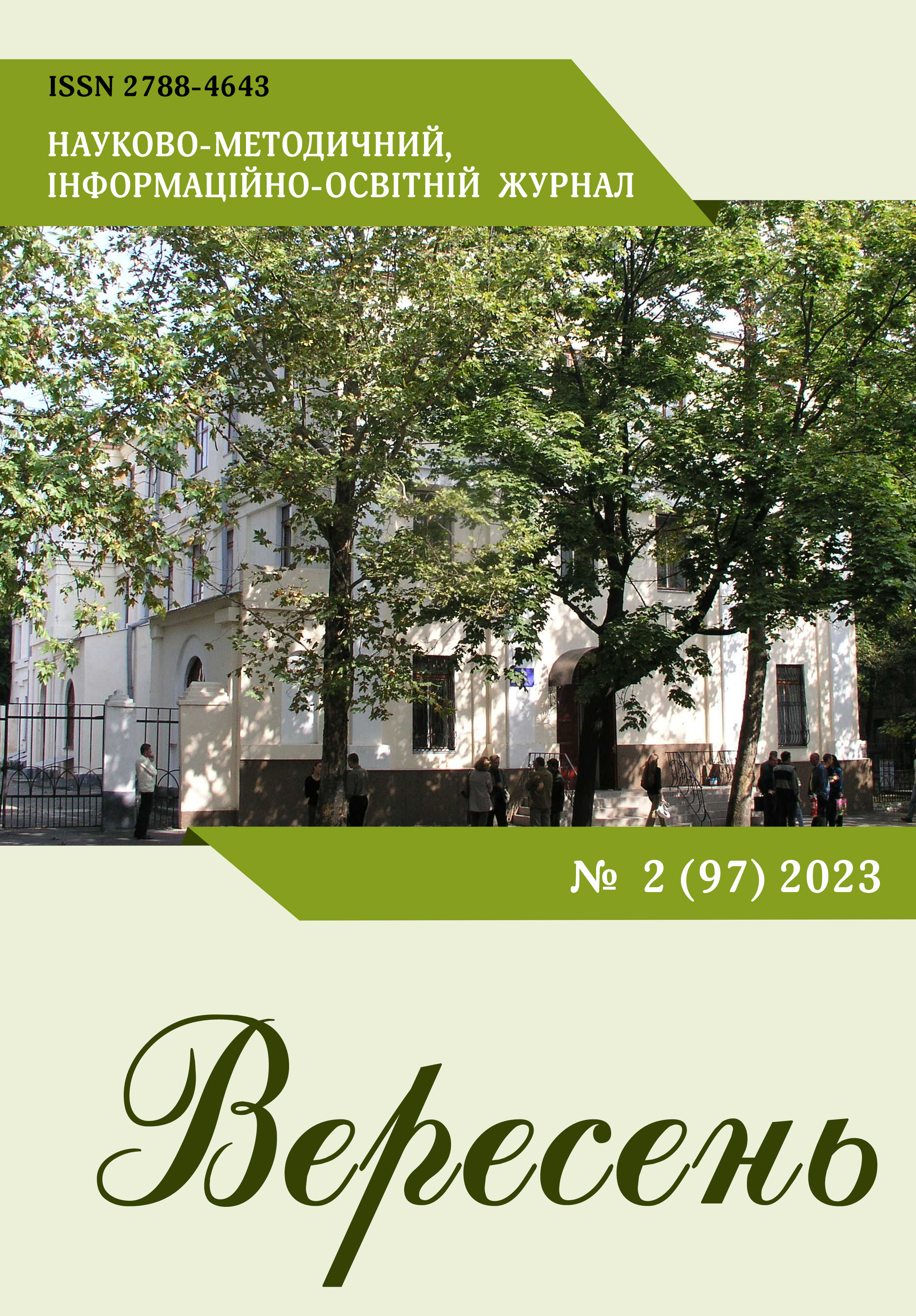EDUCATIONAL TOOLS FOR THE PREVENTION OF HIV/AIDS IN THE WORK OF THE TEACHER OF THE SUBJECT «BASIC HEALTH»
DOI:
https://doi.org/10.54662/veresen.2.2023.03Keywords:
integrated course «Health, safety and well-being», preventive and educational work, «Safety Route», subject «Basics of health»Abstract
This article emphasizes the importance of incorporating innovative educational and preventive practices into the education system, and highlights the potential of the interactive educational tool «Safety Route» for preventive pedagogical activities in the elementary school subject «Basics of Health» and the integrated course «Health, Safety, and Well-being». Specifically, the tool is designed to prevent HIV and sexually transmitted infections, and promote a tolerant attitude towards people living with HIV. To identify effective ways of implementing the «Safety Route», several scholarly works were reviewed. The article presents statistical data on the prevalence of HIV in the Mykolaiv region, including an analysis of the spread of HIV through various means of transmission in different administrative units of the region. The article proposes the intensification of educational and preventive activities in general secondary education institutions using this interactive product.
The «Safety Route» has been integrated into the professional development courses and competence- and activity-oriented variable modules for educators in general secondary education institutions in the Mykolaiv region. Additionally, the article reports on the development of the «Safety Route» variable module for the first time, which is an interactive preventive educational tool focused on reproductive health issues. The key characteristics of the «Safety Route» event have been identified as massiveness, innovativeness, interactivity, and age restrictions. The organizers have determined that active engagement and interaction among all participants will enhance the quality and effectiveness of knowledge acquisition. The «Safety Route» program educates schoolchildren on the principles of tolerance and family values.
References
Hrabovska, T. I., Hrabovskyi, O. V. & Batori-Tartsi, Z. I. (2014). Osnovni napriamky i formy profilaktychnoi diialnosti shchodo VIL/SNIDU v uchnivskomu seredovyshchi [The main directions and forms of HIV/AIDS preventive activities in the student environment]. Naukovyi visnyk Uzhhorodskoho natsionalnoho universytetu. Seriia: Pedahohika. Sotsialna robota, 33, 46–50. Retriеved from: http://nbuv.gov.ua/UJRN/Nvuuped_2014_33_15 (ukr).
Liakh, T. L. (2010). Prosvitnytska robota shchodo profilaktyky VIL/ SNIDu v zakladakh osvity [Educational work on HIV/AIDS prevention in educational institutions]. Visnyk cherkaskoho universytetu. Output 183. Part ІІ, 58–70 (ukr).
Nerubaieva, I. O. & Fratolla, P. (2018). Marshrut bezpeky. Metodychni rekomendatsii shchodo zastosuvannia interaktyvnoho profilaktychnoho osvitnoho instrumentu z pytan reproduktyvnohozdorovia, profilaktyky VIL/SNIDu ta IPSSh [Safety route. Methodological recommendations for the use of an interactive preventive educational tool on issues of reproductive health, prevention of HIV/AIDS and STDs]. Drohobych (ukr).
Samus, V., Dubyna, S. & Berezina, O. (2018). Profilaktyka VIL/ SNID na robochomu mistsi [Prevention of HIV/AIDS at the workplace]. Kyiv (ukr).
Vitkovska, O. D. (2021). Vykorystannia pedahohiky partnerstva v osvitnomu protsesi [The use of partnership pedagogy in the educational process]. Veresen, 4 (91), 25–32. Mykolaiv: MOIPPO. DOI: https://doi.org/10.54662/veresen.4.2021.02. Retriеved from: https://september.moippo.mk.ua/index.php/sept/article/view/165/153 (ukr).
Vorontsova, T. V. & Ponomarenko, V. S. (2012). Zakhysty sebe vid VIL. Treninhy zhyttievykh navychok [Protect yourself from HIV. Life skills training]. Ternopil: «Educational book – Bohdan» (ukr).




